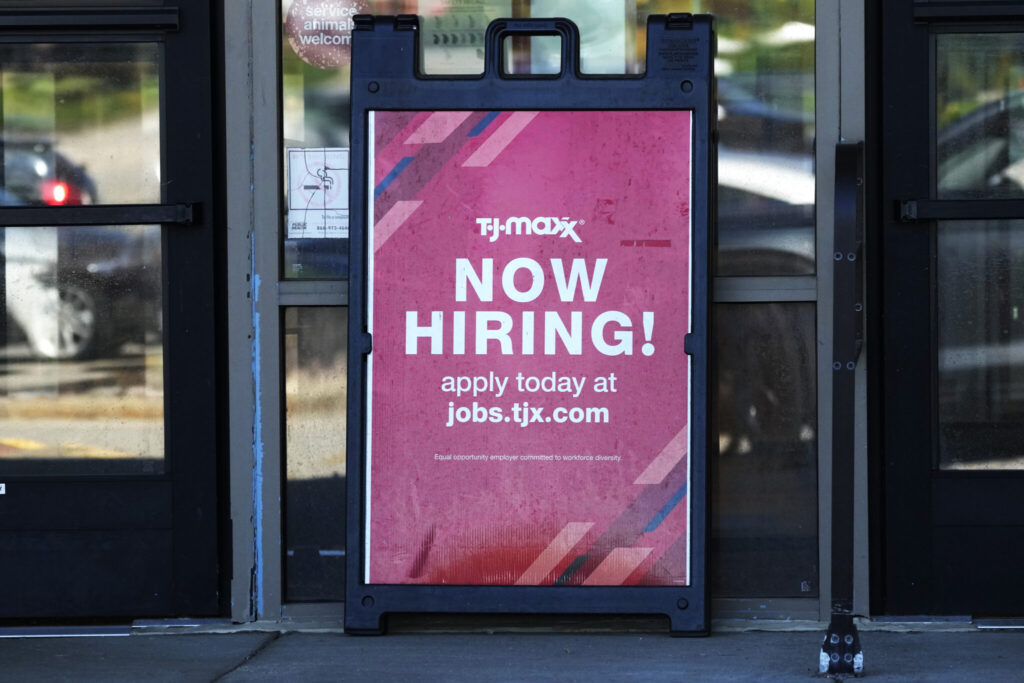The number of Americans applying for unemployment benefits ticked up last week, but layoffs remain historically low in the face of lingering inflation and high interest rates. Jobless claims for the week ending May 25 rose by 3,000 to 219,000, up from 216,000 the week before, the Labor Department reported Thursday.
Quick Read
- The number of Americans applying for jobless benefits inches up, but layoffs remain low
- Jobless claims for the week ending May 25 increased by 3,000 to 219,000, up from 216,000 the previous week, according to the Labor Department.
- The four-week average of claims also rose modestly by 2,500 to 222,500.
- Weekly unemployment claims are seen as an indicator of layoffs and the overall job market trajectory.
- Despite the increase, layoffs remain historically low amid lingering inflation and high interest rates.
- A total of 1.79 million Americans were collecting jobless benefits during the week ending May 18, an increase of 4,000 from the previous week.
The Associated Press has the story:
US applications for jobless benefits inched up, but layoffs remain low
Newslooks- (AP)
The number of Americans applying for unemployment benefits ticked up last week, but layoffs remain historically low in the face of lingering inflation and high interest rates.
Jobless claims for the week ending May 25 rose by 3,000 to 219,000, up from 216,000 the week before, the Labor Department reported Thursday.
The four-week average of claims, which quiets some of the week-to-week noise, also rose modestly to 222,500. That’s an increase of 2,500 from the previous week.
Weekly unemployment claims are broadly interpreted as a proxy for the number of U.S. layoffs in a given week and a sign of where the job market is headed. They have remained at historically low levels since millions of jobs were lost when the COVID-19 pandemic hit the U.S. in the spring of 2020.
The Federal Reserve raised its benchmark borrowing rate 11 times beginning in March of 2022 in a bid to stifle the four-decade high inflation that took hold after the economy rebounded from the COVID-19 recession of 2020. The Fed’s intention was to cool off a red-hot labor market and slow wage growth, which can fuel inflation.
Many economists had expected the rapid rate hikes would trigger a recession, but that’s been avoided so far thanks to strong consumer demand and sturdier-than-expected labor market.
In April, U.S. employers added just 175,000 jobs, the fewest in six months and a sign that the labor market may be finally cooling off. The unemployment rate inched back up to 3.9% from 3.8% and has now remained below 4% for 27 straight months, the longest such streak since the 1960s.
The government also recently reported 8.5 million job openings in March, the lowest number of vacancies in three years.
Moderation in the pace of hiring, along with a slowdown in wage growth, could give the Fed the data its been seeking to finally bring interest rates back down. A cooler reading on consumer inflation in April could also play into the Fed’s next rate decision.
Though layoffs remain at low levels, companies have been announcing more job cuts recently, mostly across technology and media. Google parent company Alphabet, Apple and eBay have all recently announced layoffs.
Outside of tech and media, Walmart, Peloton, Stellantis, Nike and Tesla have recently announced job cuts.
In total, 1.79 million Americans were collecting jobless benefits during the week that ended May 18. That’s an increase of 4,000 from the previous week.







